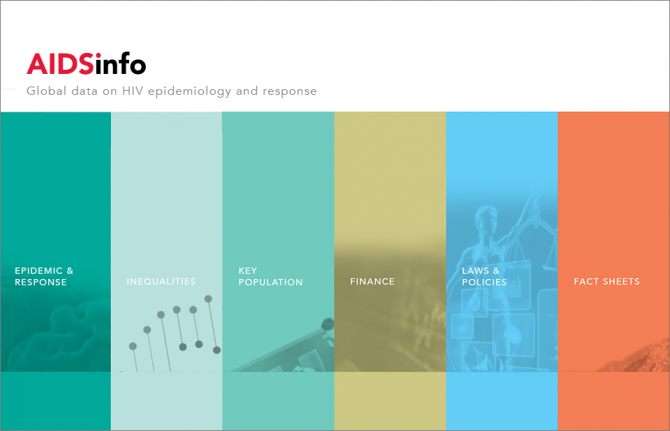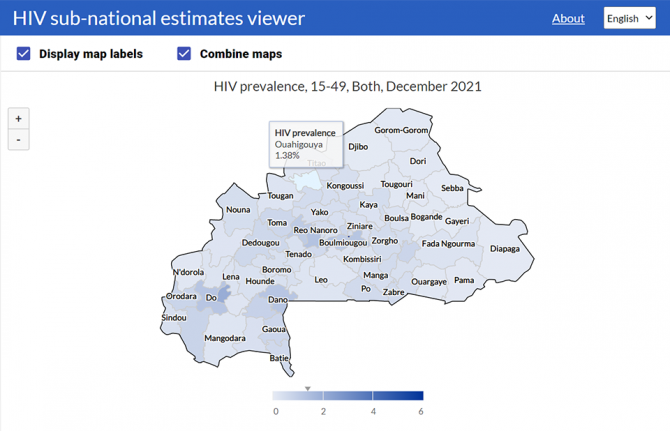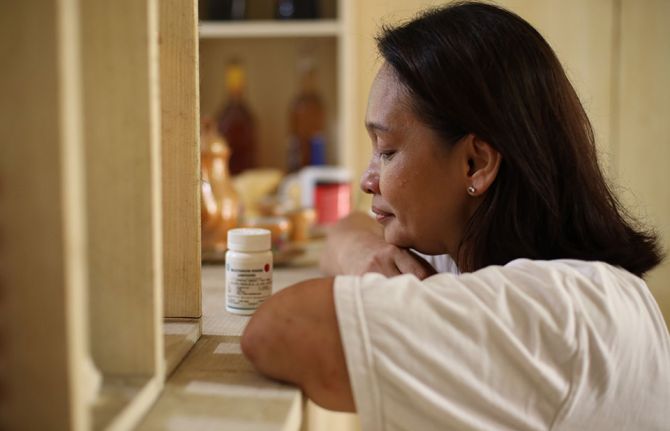



Feature Story
Improving data collection to improve national AIDS responses
29 March 2023
29 March 2023 29 March 2023During a regional UNAIDS HIV estimates workshop in Bangkok, Thailand, groups gathered around laptops to discuss national insights, including the growing HIV infections among gay men and men who have sex with men (MSM) in the Philippines, the high mother-to-child transmission rate in India, and the expansion of the epidemic among some more at-risk groups.
After months of collecting raw data in their home country throughout the year, the teams were now entering those data into specific software to analyze the results.
“Countries use the results to describe what's happening in terms of HIV incidence, prevalence, AIDS-related deaths and other indicators that are difficult, if not impossible, to directly measure,” said Mary Mahy, UNAIDS Data For Impact Director, a.i.
Since 2003, UNAIDS has supported countries to generate such uniform epidemiological measures based on data from antenatal clinics, surveys among key populations or among the entire population, antiretroviral therapy use, and more recently, HIV case reporting and vital registration systems.
At the regional workshops, country representatives, UNAIDS staff, and partners use modelling software to produce HIV estimates. “The benefit in using a model,” Dr Mahy explained, “is that it allows users to combine their best programme and surveillance data to understand what's happening with their HIV epidemic.”
Over time the HIV estimates have become increasingly granular. Since 2020, 39 countries globally can generate sub-national HIV estimates at the district level.
This year the teams put additional emphasis on developing a more complete picture of HIV among key populations (MSM, sex workers, transgender people, prisoners and people who inject drugs) to identify inequalities in the epidemiological outcomes of these different populations. That means ensuring that countries have data that looks at sex, age, whether a certain population group is more impacted than another by HIV or AIDS-related deaths for example. For UNAIDS Regional Strategic Information Officer Dr. Ye Yu Shwe this added analysis is more than just producing numbers. “It is about identifying the unequal impact of the epidemic on those who are most affected and the unequal access to services,” he explained. That is then followed by the data teams looking at what the social, and structural systems in place driving or perpetuating various results.
Charlene Tinaja from the Philippines Department of Health’s Epidemiology Bureau said that the workshop allowed her to see how the epidemic is evolving.
“Where are the new infections coming from, what are the specific age groups impacted and from what area in the country… and finally where should we strategically place interventions,” she said.
Nine separate regional workshops were held covering Eastern and southern Africa, Asia Pacific, Western and central Africa, Caribbean, Latin America Middle East and North Africa and Eastern Europe and Central Asia reaching more than 600 participants from 120 countries.
The UNAIDS estimates will be used to summarize the status of the HIV pandemic, which will be released in a July report as part of the Global AIDS update. The granularity helps to identify who is being left behind, which in turn informs efforts to adapt HIV responses to close key gaps and address persistent inequalities and more importantly advocate governments and donors.
It will also be used to measure each country’s progress in relation to their national strategic plans.
In addition, the Global Fund gauges the impact of their grants based on UNAIDS-generated HIV estimates. The estimates also enable annual reporting on progress towards the UN Sustainable Development Goal (SDG 3) of ending AIDS as a public health threat by 2030 and against time-bound targets for HIV testing, treatment and prevention services.
The UNAIDS estimates are also used to determine how the USD$ 8.7 billion dollars will be distributed among the 54 countries receiving PEPFAR support over the coming two years.
As Angeli Achrekar, UNAIDS Deputy Executive Director, said, “The HIV epidemiological estimates are the North Star for how we need to move forward.”



